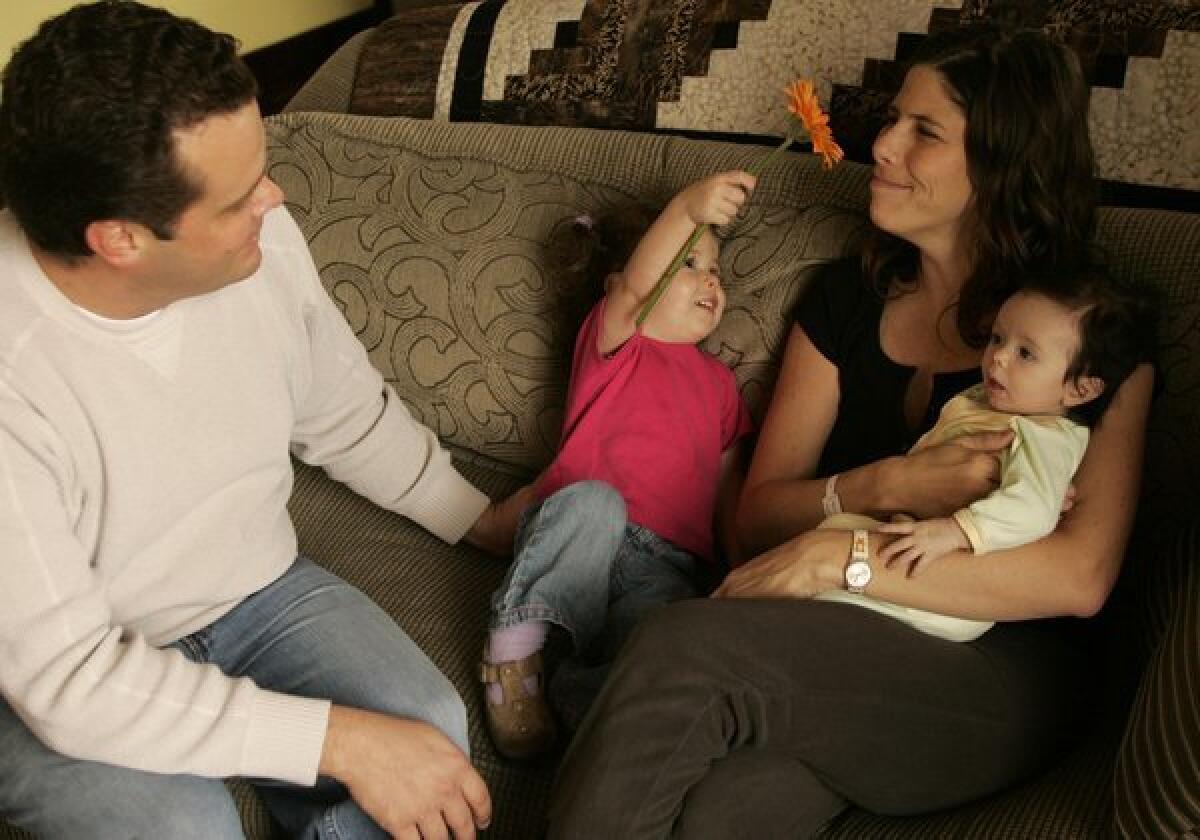Angelina Jolie, the BRCA mutation and me

Late Monday night, friends and colleagues started sending me Angelina Jolie’s op-ed about her decision to have a double mastectomy. Like Jolie, I have the mutation in my BRCA1 gene that pushed my lifetime risk of developing breast cancer to nearly 90%. (It also raised my risk of ovarian cancer above 50%.) Also like Jolie, I chose to get a double mastectomy to reduce my risk of breast cancer to less than 5%. In 2007, I wrote a first-person story in the Los Angeles Times about finding out I had this mutation and how I decided what to do about it.
Jolie is an icon of beauty -- and her disclosure doesn’t change that. She was before her surgeries, and she still is one now. She chose to take this drastic step for the same reasons I did: She had watched a parent die from cancer, brought on by this horrible mutation. And she wanted to be there for her children. In Tuesday’s New York Times, she wrote, “I can tell my children that they don’t need to fear they will lose me to breast cancer.”
My father, who passed the BRCA1 mutation to me, died from cancer in 2005 when he was 59. It was just a few weeks after my older daughter, Sadie, was born. My youngest daughter, Twyla, was born the next year.
PHOTOS: Celebrities react to Angelina Jolie’s surgery
For me, the cancer risks were just plain scary. I wanted to be able to tell my children, too, that I wouldn’t die young like Grandpa Ira had.
Jolie said she started with getting her breasts removed, implying that she may have her ovaries removed next. I did it the other way around. I had my ovaries removed in 2006, then had a double mastectomy and breast reconstruction a few years later. I was far more worried about ovarian cancer because it was more common in my family, and the survival rates were so much lower.
While the oophorectomy was a relatively easy surgery, the mastectomy was difficult and emotional, and my recovery took longer than I had expected. I was fortunate and thankful to have my husband and family supporting me the entire time. I still am.
Nearly five years later, my scars have faded and I don’t often think about what I had to do. Most people don’t know I had my breasts removed -- I look the same, even in a swimsuit. I simply live my life, without the fear of being diagnosed with breast or ovarian cancer. And I am able to celebrate Mother’s Day without worrying about my health or about future Mother’s Days.
Occasionally, my daughters ask me about my scars. I simply tell them that I had surgery so I can be their mommy for a very, very long time.
The BRCA1 and BRCA2 genes have been in the news over the last several years. TV medical dramas have taken up the issue, and books have been written. Earlier this year, the U.S. Supreme Court heard arguments about whether the BRCA genes can be patented.
But when someone like Angelina Jolie writes about her personal experience with this deadly genetic mutation, it raises awareness about the experiences of so many women like me. It helps people understand why we make these drastic decisions. It also inspires women with a family history of these cancers to get BRCA testing and to talk to their doctors about whether to have the surgeries.
But it also reminds me how little we know about BRCA and that researchers and doctors still have a long way to go -- so our daughters, and granddaughters, don’t have to make the same choices to save their lives.
Return to Science Now.






